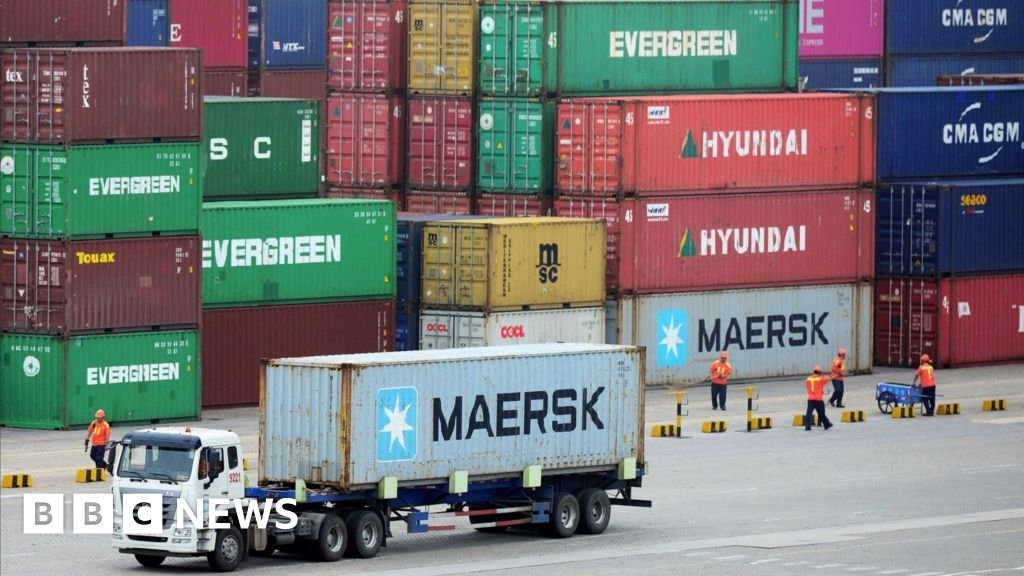The measures could disrupt the global supply chain and hit the three countries affected by the tariffs hard.
The tariffs on Mexico and Canada will remain in place until the two countries crack down on drugs, especially fentanyl, and migrants crossing the border illegally, Trump said in a post on his Truth Social platform.
“Both Mexico and Canada have the absolute right and power to easily resolve this long-simmering issue,” he said.
“The time has come for them to pay a very heavy price!”
In a separate message, Trump blasted Beijing for failing to follow through on promises that he said Chinese officials had implemented to carry out the death penalty for people caught selling fentanyl.
A spokesman for the Chinese embassy in Washington told the BBC that “the idea that China knowingly allowed fentanyl precursors to enter the US is completely contrary to the facts and reality.”
“China believes that Sino-American economic and trade cooperation is mutually beneficial. No one wins in a trade or tariff war,” he added.
The Biden administration has called on Beijing to do more to stop the production of ingredients in fentanyl, which Washington estimates killed nearly 75,000 Americans last year.
During his campaign, Trump threatened Mexico and China with tariffs of up to 100% if he deemed them necessary, far higher than those he imposed during his first term as president.
Trump also said he would end China’s most-favored trade status with the United States, the most favorable terms offered by Washington for tariffs and other restrictions.
Last year, more than 80% of Mexico’s exports went to the US, while about 75% of Canada’s exports went to its larger neighbor.
Even after years of a bitter trade dispute between the world’s two largest economies, the US still accounts for about 15% of China’s exports.
Tariffs are a central part of Trump’s economic vision — he sees them as a way to grow the U.S. economy, protect jobs and increase tax revenue.
He previously argued that these taxes “will not be a cost to you, they are a cost to another country.”
This is almost universally regarded as a delusion by economists.
“This is clearly in line with his campaign promise to use tariffs as a weapon to implement many of his policy initiatives,” Stephen Roach, senior fellow at Yale Law School’s Paul Tsai China Center, told BBC Business Today.
Trump’s pick for Treasury Secretary, Scott Besant, previously suggested that the president-elect’s threats of major tariff hikes were part of his negotiating strategy.
“My general view is that at the end of the day he’s a free trader,” Besant said of Trump in an interview with the Financial Times before he was nominated for the role.
“It’s escalation to de-escalation.”
This comes at a time when China’s economy is in a much more vulnerable position than it was during Trump’s previous presidency.
The country is struggling with a number of serious problems, including a prolonged crisis in the real estate market, weak domestic demand and rising local government debt.
The new tariffs appear to violate the terms of the US-Mexico-Canada Trade Agreement (USMCA).
The deal, which Trump signed into law, went into effect in 2020. It continued mostly duty-free trade relations between the three neighboring countries.
After Trump threatened tariffs, he discussed trade and border security with Canadian Prime Minister Justin Trudeau, according to Reuters.
Mexico’s Finance Ministry said, “Mexico is a major trading partner of the United States, and the USMCA provides a basis of certainty for national and international investors.”

